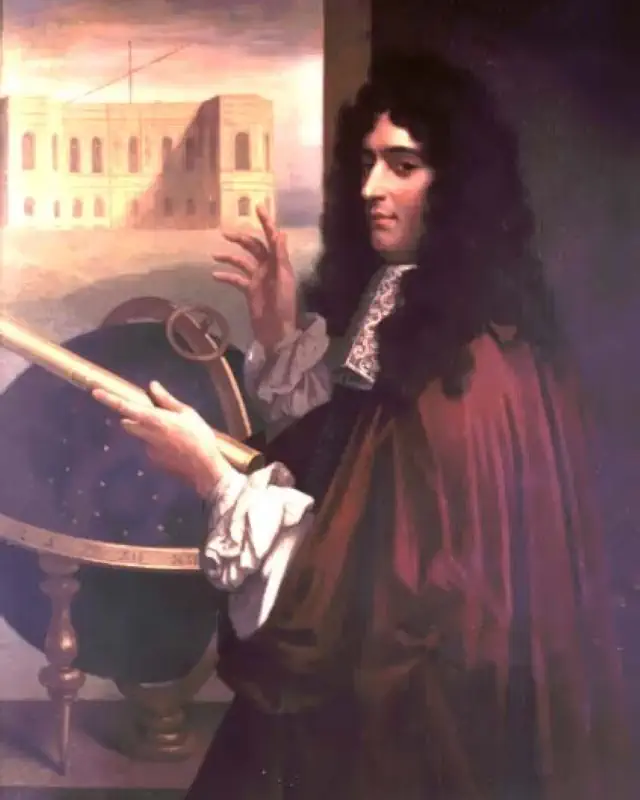On March 21, 1864, the Italian mathematician, astronomer, and engineer Giovanni Domenico Cassini (8 June 1625 – 14 September 1712) discovered Saturn’s moons Tethys and Dione. Cassini used a refractor telescope with an aperture of 108 mm to make this observation.
Today’s (March 21) story of what happened this day in Science, Technology, Astronomy, and Space Exploration history.
Giovanni Domenico Cassini

Giovanni Domenico Cassini was born in Perinald, Imperia, Italy, on 8 June 1625. Because of his interest in astrology and the emerging discipline of science, he was employed by a rich amateur astronomer, Marquis Cornelio Malvasia (1603 – 1664), in Bologna.
In Bologna, Cassini indulged his passion for the skies using the Marquis’s instruments and was taught by Jesuit scientists. His work was exceptional in its quality and precision and formed the grounding for his later prestigious academic positions.
In his thirties, Cassini worked for the Bolognese government and simultaneously held the chair at the University of Bologna. His work included observations of the Sun but, as he obtained more powerful telescopes, he turned his attention to the planets.
Cassini needed bigger buildings to house these new instruments. He placed his ‘Meridiana’ instrument in the San Petronio Cathedral and used it to compute the exact date of Easter based on the apparent motion of the Sun across the sky.
In 1666, he used observations of Mars to calculate that the red planet rotated once every 24 hours and 40 minutes. We now know it to be 24 hours 37 minutes 22.6 seconds, a “sol”.
In 1668 Cassini compiled tables showing the positions of Jupiter’s satellites and these were used by the Danish astronomer Ole Rømer to establish that the speed of light is extremely fast but not infinite.
On hearing of these great works in 1669, King Louis XIV of France invited him to Paris to join the recently formed Acadèmie Royale des Sciences. By 1671, Cassini was director of the Observatoire de Paris and two years later became a French citizen, changing his name to Jean-Dominique.
Known for his work on astronomy and engineering, he discovered four moons of Saturn (Iapetus in 1671, Rhea in 1672, and both Tethys and Dione in 1684) and the large gap in Saturn’s rings in 1675, now called the Cassini division.
He also was the first director of the Paris Observatory, measured the sun’s apparent motion through the sky, and even approximately calculated the distance from the Earth to the Sun. In addition, he used the shadows of Jupiter’s moons and shadows on Jupiter’s surface to determine the length of Jupiter’s day, and he is also credited with discovering Jupiter’s Great Red Spot.
Giovanni Domenico Cassini died in Paris on 14 September 1712, aged 87.
NASA, ESA, and the Italian Space Agency’s joint project, the Cassini spacecraft (see notes 1) was named after him.
Dione

Dione is a small moon of 349 miles (562 km) in mean radius orbiting Saturn every 2.7 days at a distance of 234,500 miles (377,400 km), which is roughly the same distance that the moon orbits around the Earth.
Tethys

Tethys was discovered by Giovanni Domenico Cassini on March 21, 1684, together with Dione, another moon of Saturn, and is named after the titan Tethys of Greek mythology.
It is Saturn’s fifth-largest moon. Its irregular shape is 331 miles (533 kilometers) in mean radius, with dimensions 669 x 657 x 654 miles (1076.8 x 1057.4 x 1052.6 kilometers).
The Italian astronomer named the four moons he discovered (Tethys, Dione, Rhea, and Iapetus) Sidera Lodoicea (“the stars of Louis”) to honor King Louis XIV (5 September 1638 – 1 September 1715), known as Louis the Great (Louis le Grand) or the Sun King (le Roi Soleil), a monarch of the House of Bourbon who reigned as King of France from 1643 until his death in 1715.
Tethys has a low density of 0.98 g/cm3, the lowest of all the major moons in the Solar System, indicating that it is made of water ice with just a small fraction of rock. This is confirmed by the spectroscopy of its surface. The largest impact crater on Tethys, which can be seen in the image above, Odysseus, is about 250 miles (400 km) in diameter.
March 21 in Science, Technology, Astronomy, and Space Exploration history
- 2013: European Space Agency’s (ESA) Planck spacecraft revealed the most detailed map ever created of the Cosmic Microwave Background (CMB, CMBR)
- 1864: Giovanni Domenico Cassini discovered Saturn’s moons Tethys and Dione on March 21, 1864
Notes
- The name of the mission was actually Cassini-Huygens. It was a joint project of NASA, ESA (the European Space Agency), and the Italian Space Agency (ASI). The spacecraft, named after astronomers Giovanni Cassini and Christiaan Huygens, comprised both NASA’s Cassini probe and ESA’s Huygens lander which would land on Saturn’s largest moon, Titan. Cassini released the Huygens probe on December 25, 2004, by means of a spring and spiral rails intended to rotate the probe for greater stability. It entered the atmosphere of Titan on January 14, 2005, and after a two-and-a-half-hour descent landed on solid ground. Cassini probe was destroyed by diving into Saturn’s atmosphere on September 15, 2017. This method of disposal was planned to avoid potential biological contamination of Saturn’s moons, since Titan, Enceladus, and other icy moons of Saturn may harbor oceans and alien life.
Sources
- Dione on the NASA Solar System website
- Tethys on the NASA Solar System website
- “Jean-Dominique Cassini: Astrology to astronomy” on the European Space Agency (ESA) website
- Giovanni Domenico Cassini on Wikipedia
- Cassini-Huygens on Wikipedia
- Moon Landings: All-Time List [1966-2025] - February 2, 2025
- What Is Max-Q and Why Is It Important During Rocket Launches? - January 16, 2025
- Top 10 Tallest Rockets Ever Launched [2025 Update] - January 16, 2025


